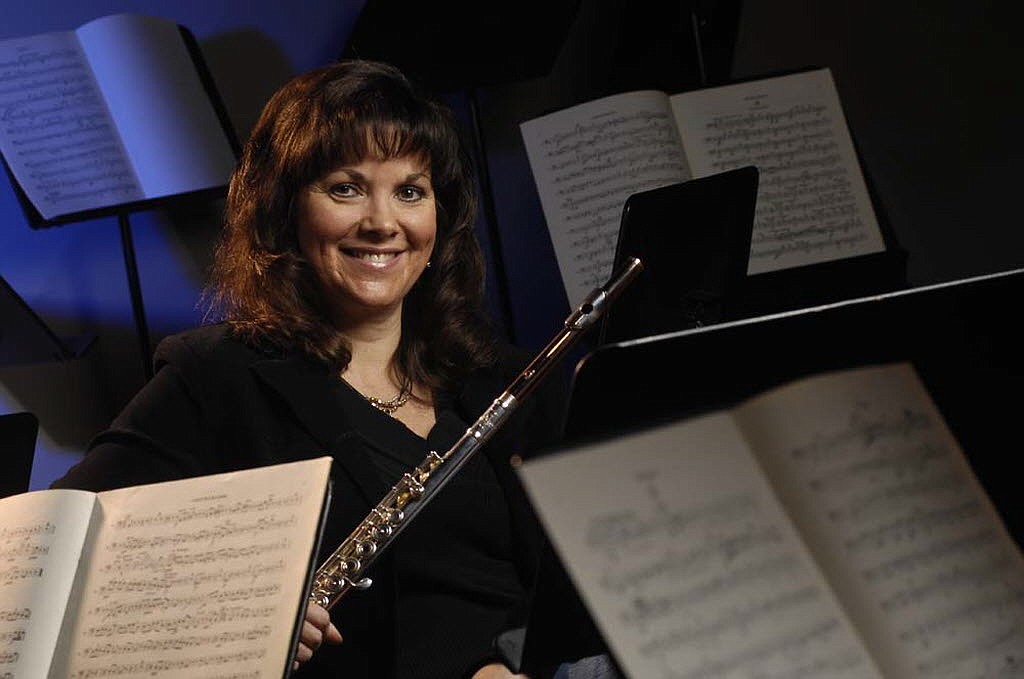- November 25, 2024
-
-
Loading

Loading

There was a great deal of “new” when the Sarasota Orchestra formally opened its 2017-18 season Saturday night at the Sarasota Opera House: new venue, new series, new format, new conductor, many new faces and music mostly new to the Sarasota audience.
This “Discoveries” series consists of three concerts at the opera house, each featuring a soloist from the orchestra in a shorter no-intermission format with a guest conductor and a more informal atmosphere designed to reach a first-time audience. If this concert was any indication, it’s already a going thing, for the opera house was full of enthusiastic concertgoers eager to enjoy and applaud.
This concert was titled “Renaissance,” presenting music with roots in the Renaissance as viewed through a 20th century lens, giving a close-up on style and content.
Highlighting the concert was Betsy Traba’s lightning performance of the Renaissance Concerto for Flute and Orchestra by Lukas Foss. The work was commissioned in 1984 by Carol Wincenc, a faculty member of the Sarasota Music Festival and La Musica chamber concerts. Using melodies and forms from Renaissance composers, Foss has constructed a true virtuoso work, morphing these older forms and tunes into much more modern styles, using just about every playing skill in the flutist’s vocabulary.
Muted trumpets in the audience and three strings and a flute in the rear of the hall gave a true antiphonal air to one movement, which with added special effects from the soloist, made for quite a kaleidoscope of sound and color. Principal Flutist Betsy Traba carried it off as if it were nothing at all. Glissandos, flutter tonguing, beautiful long low tones and an entire vocabulary of flutedom were all handled with ease and aplomb in this tuneful concerto that still had its contemporary moments — a true classic for the instrument, well performed by both soloist and orchestra.
Respighi’s Ancient Airs and Dances, Suite No. 1 opened the concert, presenting this composer’s arrangements of four Renaissance dances. These orchestral settings add color, spice and humor to the strict dance forms, and served as an excellent opening for the evening.
George Walker was the first African-American composer to win a Pulitzer Prize, and his “Lyric” for string orchestra is an early work, written in 1941. It parallels the “Adagio for Strings” of Samuel Barber in many ways, yet it is not imitative. Like the Barber work, it was originally a movement of a string quartet, transcribed for string orchestra. The musical form is similar, yet it speaks in Walker’s own musical voice, showing his command of counterpoint and melody, and once again proving that a simple melody, shaped and developed, can indeed be very moving. The strings played this work with a full and deliciously warm sound, responding to every nuance of this most romantic work.
Closing the concert was Mozart’s Symphony No. 25 in G Minor. Probably best known as the main title theme for the movie “Amadeus,” it is nevertheless an important work. Mozart wrote only two symphonies in a minor key, and both, including the more famous No. 40, are in g minor. The symphony may seem short in duration, but it is big in ideas and development and shows that Mozart was aware of current trends in composition and performance as originated by the Mannheim orchestra, one of the best in Europe at the time. This is shown through the use of sharply ascending passages and crescendo and diminuendo, a gradual increase and decrease in volume that became immediately popular during Mozart’s time and were championed by the Mannheim orchestra.
Guest conductor was Steven Jarvi, who has appeared with the St. Louis, Kansas City and New World Symphony Orchestra. His beat is clear if a bit large and overbearing at times, but he certainly knows what he wants from the score and the orchestra, and they responded beautifully. For an opening concert, with the musicians having returned only recently from their summer engagements, everything seemed well in place and promises another excellent season for the Sarasota Orchestra.